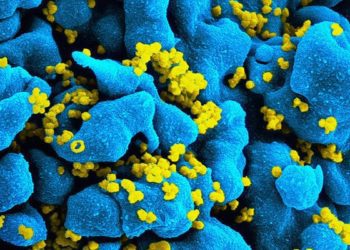rVSV-ZEBOV-GP ring vaccination reduces the incidence of Ebola virus disease
1. In the outbreak of Ebola virus disease (EVD) in the Democratic Republic of Congo (DRC) between 2018 and 2020, ring vaccination with rVSV-ZEBOV-GP was conducted around new cases within 21 days of symptom onset along with case isolation.
2. Earlier implementation of control measures was associated with a faster decline in new EVD rates and no safety concerns were observed with the vaccine
Evidence Rating Level: 2 (Good)
Study Rundown: EVD is an infectious disease with a high mortality rate. An outbreak occurred in the DRC between 2018 and 2020. Previous randomized data in Guinea suggested evidence of protection conferred from ring vaccination with the single-dose live-replicating rVSV-ZEBOV-GP vaccine 10 days or more following administration. The vaccine was deployed in a similar approach during the outbreak in DRC alongside other control measures. Overall, 1853 rings were established around new cases within 21 days of symptom onset and vaccination was offered to ring members (contacts and contacts-of-contacts). Among those vaccinated, almost all new cases were diagnosed between 0 to 29 days after vaccination. The earlier control measures including vaccination were implemented, the faster EVD rates fell in the case contacts, with a precipitous decline around day 10. Among those who remained disease-free at day 10, the rate of EVD onset between day 10 and 29 was also significantly lower than previously observed in Guinea, where vaccination was delayed until 21 days after ring establishment. These results further bolstered the earlier evidence of efficacy from Guinea and added further support for earlier ring vaccination.
Click here to read the study in NEJM
In-Depth [prospective cohort]: This was a nonrandomized prospective cohort study reporting the outcomes of adding ring vaccination to other control measures during the 2018-2020 EVD outbreak in the DRC. The vaccine used in this study is rVSV-ZEBOV-GP, a live-replicating recombinant vesicular stomatitis virus modified to express the Zaire Ebola virus surface glycoprotein and elicit an antibody response. Of the 3,470 reported cases, 1,853 rings surrounding new cases or clusters were established within 21 days of symptom onset in the index case. Vaccination was offered to ring members, consisting of contacts who had had direct exposure to the confirmed EVD case and contacts-of-contacts who were living near or within the same household of identified contacts, along with healthcare workers. In total, 265,183 participants were vaccinated between August 2018 and January 2020 and 102,515 were monitored on days 0, 3, and 21 for safety. Within the rings, 434 new cases were diagnosed, almost all within the first 9 days (380 cases) or 10 to 29 days (32 cases) after vaccination, with the additional 22 cases diagnosed after day 29 after a mean follow-up of 170 days. The incidence of EVD was significantly higher among contacts (6.6/1000) than contacts-of-contacts (0.4/1000), especially from day 0 to 9 (rate ratio [RR] 0.04, 95% confidence interval [CI] 0.03-0.06). Among both contacts and contacts-of-contacts, the incidence declined quickly during the second week after vaccination. Case-fatality rates were 26% for those with EVD onset on days 0-9 after vaccination, 14% for EVD onset on days 10-29, and 5% for EVD onset at later times. The overall case-fatality among the immunized with EVD was 23%, compared to 75% among other cases in this outbreak. No adverse events reported were attributed to the vaccine. Overall, these results further corroborate the previous randomized evidence of efficacy in Guinea and lend support to earlier implementation of ring vaccination to control EVD outbreaks.
Image: PD
©2025 2 Minute Medicine, Inc. All rights reserved. No works may be reproduced without expressed written consent from 2 Minute Medicine, Inc. Inquire about licensing here. No article should be construed as medical advice and is not intended as such by the authors or by 2 Minute Medicine, Inc.







